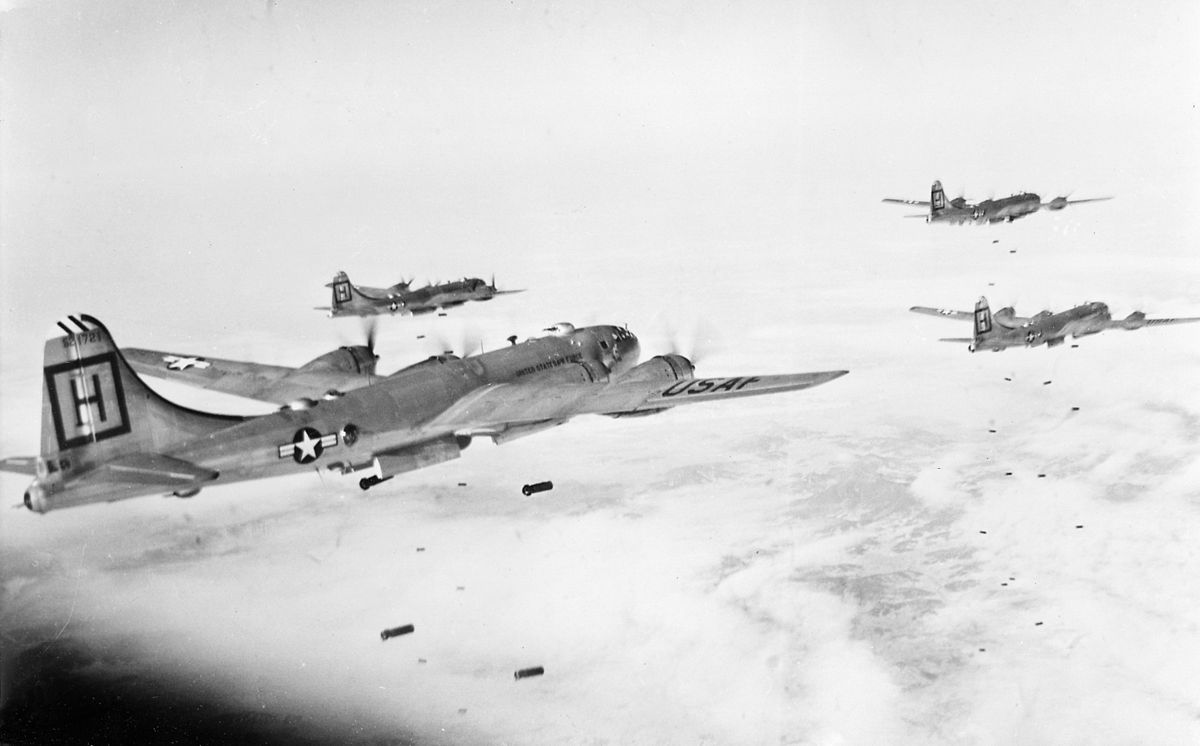
US activates Nuclear Weapon capability
Kadena Air Base, Higashi, KadeIn 1951, the US escalated closest to atomic warfare in Korea. Because China deployed new armies to the Sino-Korean frontier, ground crews at the Kadena Air Base, Okinawa, assembled atomic bombs for Korean warfare, "lacking only the essential pit nuclear cores". In October 1951, the United States effected Operation Hudson Harbor to establish a nuclear weapons capability. USAF B-29 bombers practiced individual bombing runs from Okinawa to North Korea (using dummy nuclear or conventional bombs), coordinated from Yokota Air Base in east-central Japan. Hudson Harbor tested "actual functioning of all activities which would be involved in an atomic strike, including weapons assembly and testing, leading, ground control of bomb aiming". The bombing run data indicated that atomic bombs would be tactically ineffective against massed infantry, because the "timely identification of large masses of enemy troops was extremely rare".
General Matthew Ridgway was authorized to use nuclear weapons if a major air attack originated from outside Korea. An envoy was sent to Hong Kong to deliver a warning to China. The message likely caused Chinese leaders to be more cautious about potential US use of nuclear weapons, but whether they learned about the B-29 deployment is unclear and the failure of the two major Chinese offensives that month likely was what caused them to shift to a defensive strategy in Korea. The B-29s returned to the United States in June.
